A brief introduction to the refreshing description of the flavor, taste and aroma characteristics of Colombian coffee beans.
Professional coffee knowledge exchange more coffee bean information please follow the coffee workshop (Wechat official account cafe_style)
Colombian Coffee
Speaking of Colombian coffee, Qianjie believes that many coffee fans are attracted to Colombian coffee. Because the name of Colombian coffee is extremely romantic, such as Jiuxin chocolate-flavored coffee beans known as "Flower Moon Night" and rose peach-flavored coffee beans called "Rose Valley". Many coffee fans are fascinated by this.
Colombians love coffee as much as they love football. Their streets are full of cafes, and customers are packed from morning till night. And the free drink after dinner in the restaurant is also coffee.
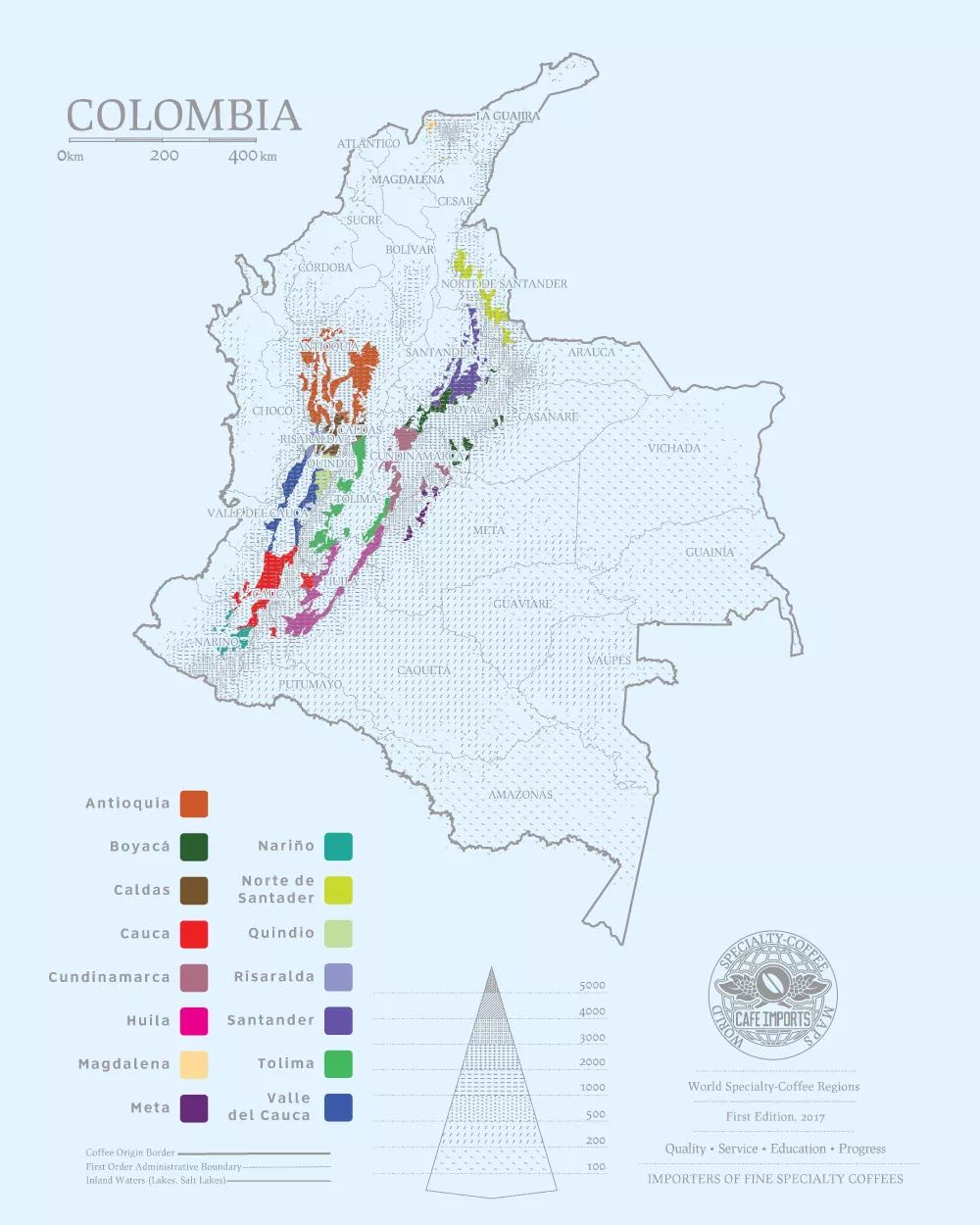
According to Qianjie, the reason why Colombian coffee is so good is that Colombia is more concerned about developing products and promoting production. It is this, coupled with its superior geographical and climatic conditions, that makes Colombian coffee excellent in quality and delicious and famous all over the world.
Colombian coffee beans after roasting will release sweet aroma and have the characteristics of sweet in acid and flat in bitterness. because of the appropriate concentration, they are often used in high-grade mixed coffee. After brewing, Colombian coffee will exude a light and elegant aroma, not as strong as Brazilian coffee, not as sour as African coffee, but a sweet fragrance, low-key and elegant.
Colombian coffee is also often described as silky and smooth. Of all the coffees, it is the most balanced, soft, smooth and ready to drink, and it has won praise unmatched by other coffee: known as "green gold".
Many coffee fans who have tasted it in Qianjie are very fond of it.
Of course, the pure taste of Colombian coffee is absolutely inseparable from its natural environment with the most favorable conditions for coffee growth. But in addition, the hard work of local growers is also an indispensable "seasoning" for the birth of delicious coffee.
According to Qianjie, in Colombia, the planting area of coffee has reached 1.07 million hectares, there are about 302000 coffee plantations in the country, and 30 to 40 percent of the rural population depends directly on coffee production. Although there are many farms in Colombia, they are not large in area. The area of each farm is only about 2 hectares, and more than 80% of the coffee plantations have only about 5000 coffee trees, an average of 3000. Thus it can be seen that agriculture in Colombia belongs to the small-scale farm type.
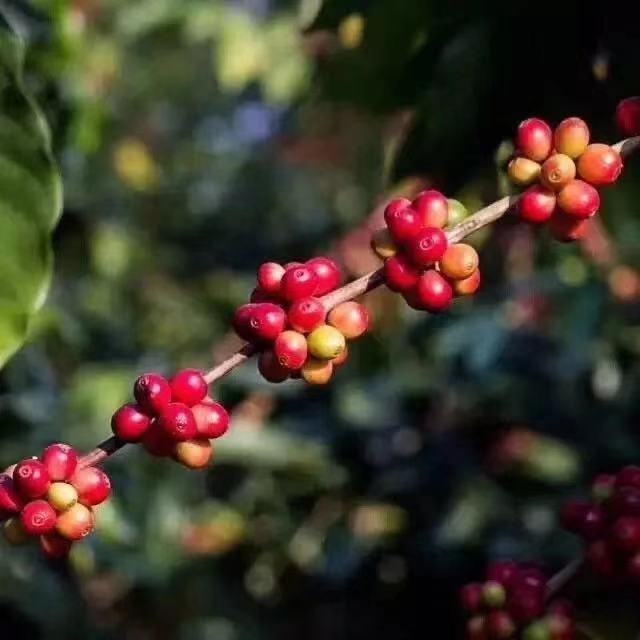
The main variety of Colombian coffee is Arabica coffee (coffea arabica), that is, small fruit coffee (small grain coffee). There are several varieties of small fruit coffee. Brazilian coffee, which has the largest yield in the world, has larger seeds, stronger adaptability and high fruit yield; by contrast, the mild coffee produced in Colombia is a more high-quality variety, which is related to its special geographical location and climatic environment. Colombian coffee is divided into more than 200 grades, the regional coffee is very strong. Columbia beans take the SUPERMO as the highest grade, followed by the EXCELSO, but according to the front street, only selected coffee with a diameter of more than 18 beans can be included in the selected coffee.
Colombian coffee producing areas are mainly in the south, above 1500m above sea level, mainly distributed in Huilan Province, Cauca Province, Nalinglong and Tolima. Qianjie believes that these producing areas have delicate sour and sweet berries.
Next, Qianjie will introduce the characteristics of the following coffee producing areas to coffee fans.
Huilan province
Located in the southern part of the Central Mountains in southern Colombia, it is the most famous boutique coffee producing area in the country. This area is a hilly land surrounded by mountains, planted more than 1500 meters above sea level, where the most important rivers in Colombia meet, bringing abundant water resources and moisture. Contrary to the general impression of Colombian balanced mellow by coffee fans, the fine Goran products produced by many small farmers in micro batches are actually very characteristic of the flavor of the producing area. In recent years, with the attention to the quality of coffee and the demand for fine coffee in the international market, the original bean size grading system has been gradually abandoned to micro-batches provided by small farmers who organize coffee production in micro-producing areas. dozens of small farmers provide their unit harvest into a micro batch for sale, and they also have the opportunity to directly select many high-quality small farmer coffee through batch-by-batch cup testing.
Cauca province
The average altitude of Colombian coffee origin certified producing area is 1758m, and the highest elevation can rise to 2100m. The topography, precipitation, temperature and volcanic soil of this area prepare suitable conditions for coffee growth. 80% is mountainous, with parallel mountain systems in the east and middle, part of the Andes, and the central mountain system includes two major volcanoes, Sotara and Petacas. The border province of Cauca, like other southwestern producing areas, has a distinct unimodal distribution (monomodal). The dry season mainly occurs from August to September each year, followed by a concentrated coffee season followed by the following year's concentrated coffee harvest season.
The biggest difference in climate between it and other producing areas is probably the relatively large temperature difference. The daily average temperature is 11 ℃, while the daytime average temperature is 18 ℃. The temperature difference between day and night is an important factor that constitutes high-quality coffee. Low night temperatures and relatively higher elevations slow down the growth of coffee, allowing coffee seeds and beans to more fully absorb the nutrients of coffee fruits, as well as better acidity and commendable special sweetness of Coca Coffee.
Nalinglong province
Located in the southwest of the country, facing the Pacific Ocean to the west and Ecuador (Ecuador) to the south, the Andes Mountains run through the province. Coffee is grown on a high-altitude cloud belt of 1600 Murray 2300. The soil is fertile volcanic geology, small but full beans and green color. Most of the annual output of Nalinglong is purchased by large American soybean merchants. Narino province is located in the southwest of Colombia, bordering by the Pacific Ocean to the west and neighboring Ecuador (Ecuador) to the south, the Andes Mountains run through the province, where there are magnificent mountains and beautiful scenery, and there are many rivers flowing south through this area, belonging to Colombia's alpine coffee growing area, which has given birth to many small farmers of fine coffee. The total annual output of that Linglong province is about 150000 bags, but only about 6000 bags belong to the selected beans.
Tolima province
Adjacent to Huilan and Cauca, there are the north-south Andes (M. Andes) and the Cordillera (M. Cordillera), and between the two famous mountain systems is the Magdalena River (R. Magdalena), which runs from south to north. The name Tolima comes from the earliest people who lived here, "Pijaopeople". In the language of this ancient people (Pijao word), tolima means "snow cover" and "snowed". The farms in Tolima are generally slightly larger than those in other southern Colombian producing areas, ranging from 10 to 15 hectares. The cooperative approach is also popular here, where farmers send their small batches of fresh coffee and fruit to the cooperative's processing plant. Some farmers will also choose to deal with it on their own, making use of their own small-scale treatment facilities that can handle the harvest of the day.
These are the main coffee producing areas in Colombia. of course, coffee producing areas will more or less affect the flavor of coffee because of the natural conditions of climate and altitude, but Qianjie believes that the different treatment methods will also determine the flavor of coffee. For example, the coffee cherries in San Jose Manor are fermented in rum barrels, while Huayue Night is treated by anaerobic sun treatment. Rose Valley is fermented with double anaerobic enzymes, which is to a great extent different from the water washing and sun treatment often mentioned in Qianjie. Coffee fans in Qianjie must also be full of curiosity at this time. Then Qianjie will give you some Colombian coffee and tell us what is so special about the above-mentioned coffee treatments.
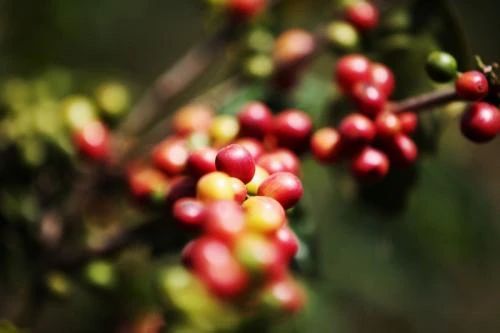
Here are all the Colombian coffees available on the front street.
Front Street Coffee Columbia San Jose Manor Coffee beans
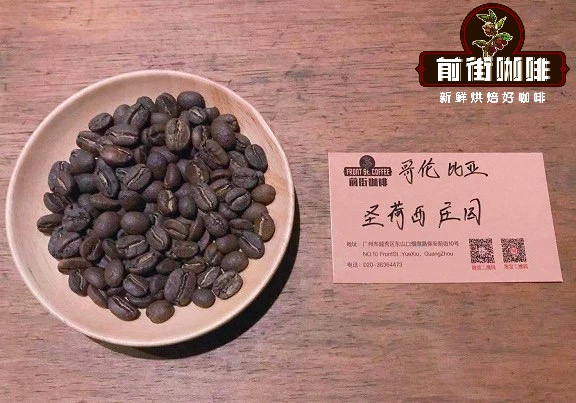
Country: Colombia
Producing area: Caldas
Altitude: 1750m
Variety: Castillo
Treatment method: refined water washing rum barrel fermentation treatment
Flavor: rum, wine heart chocolate, tropical fruit, maple syrup
The owner of San Jose Manor is the founder of the rum barrel fermentation process mentioned above in Qianjie. Qianjie put this bean on the shelf because after the cup test and brewing, it was found that San Jose also showed the fragrance of tropical fruit on the basis of wine rhyme, which was similar but had its own characteristics, which made Qianjie finally finalize and put the bean on the shelf.
And the origin of this coffee bean treatment is also very interesting. according to Qianjie, it is understood that it is the third-generation hostess of San Jose Manor because she is committed to promoting Colombian coffee. In the traditional production and modern boutique coffee wave to break through and try to find a different path. Under this premise, what would happen if she had an idea when she was brewing rum with her husband and imagined putting raw coffee beans in oak barrels? Will it absorb oak flavor and achieve barrel brewing effect, just like the original wine?
Under this idea, the hostess Monsalve Botero began to put raw beans into rum barrels of different ages for low-temperature fermentation in 2013, and compared the fermentation flavor produced at different times, through this experiment, the most suitable bucket and fermentation time length were selected. Finally, we successfully found the most suitable combination to achieve a special and satisfactory flavor, so as to produce rum barrel fermented coffee which is different from traditional rum washing.
Front street coffee Colombian Isabella coffee beans
Country: Colombia
Producing area: Huilan
Altitude: 1760m
Variety: pink bourbon
Treatment: semi-washing
Flavor: citrus, floral, honey, fruit
Qianjie believes that senior coffee fans have heard of bourbon coffee beans, but pink bourbon must have heard of it for the first time, so how did such a young girl's pink bourbon come into being? According to Qianjie, pink bourbon was first planted in Huilan producing area. At first, it was mixed with other bourbon and Kaddura, and then it was picked and treated separately. Coffee cherries show a romantic pink after ripening, but it is very rare to maintain this pink, because the color of coffee fruit is ultimately determined by recessive genes in pollen grains, which requires hybridization in pollen grains. It is necessary to have both yellow genes that tend to yellow bourbon and red genes that tend to red bourbon, and these are recessive genes, which are very easy to interfere with each other, so pink bourbon is a very rare variety.
On the other hand, this coffee in Qianjie is treated with semi-washed coffee, and the specific method of semi-washing is to dry the coffee fruit with the sun, and then rinse off the skin and pulp with water. Unlike the water washing method, the coffee fruit is not put into the sink to ferment. Therefore, the coffee beans treated by semi-washing are always sticky, but their acidity and sweetness are quite good, and the aroma is very charming.
After testing and brewing in Qianjie Cup, it is considered that the flavor of this Isabella coffee is delicate and rich, subtle and complex. It has a juicy, vibrant and balanced acidity, as well as a silky and light taste. Crisp and sweet, the flavor is saturated. Therefore, Qianjie will give this coffee Amway to friends who have a girl's experience of coffee fans.
Front Street Coffee Columbia Flower Moon Night Coffee beans
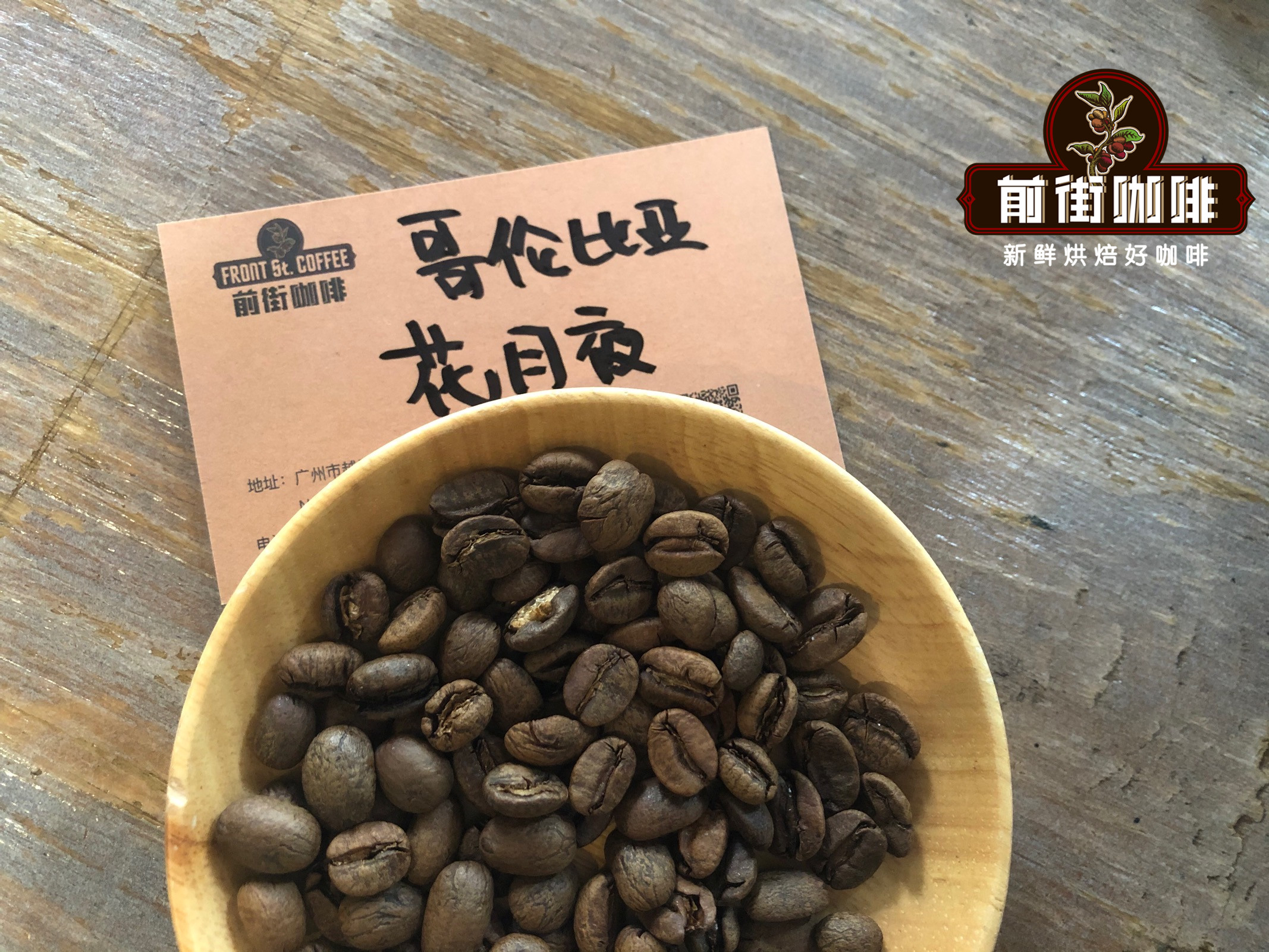
Country: Colombia
Production area: Huilan (Esteogatine Farm)
Altitude: 1800m
Variety: Kaddura
Treatment: anaerobic solarization
Flavor: strawberry, peach, fermented wine, chocolate, fruit wine
The name of "Flower Moon Night" coffee is very poetic and picturesque. Through cup testing and brewing in the front street, we can see that its flavor is shown in its strong aroma, bright aroma and full mellow thickness. it is not only low acidity but also good sweetness, which is amazing. So Qianjie decided to bring this moonlight coffee to coffee lovers to have a taste!
So how did Flower Moon Night Coffee come into being? here is thanks to Ramirez, the owner of Astorgatin Farm, who has studied the anaerobic sun-cured coffee beans. According to the knowledge of the front street, he comes from a coffee-growing family. He has been engaged in coffee production since the age of 18, worked as a coffee professional in Acevedo City, and then had the opportunity to buy his own coffee on a farm and finally sold it. A year later, I bought this Astorgatin Farm, which grows Kaddura, our common variety of coffee. Kaddura is a natural variety of bourbon, often with refreshing fruit acidity and a hint of sweetness. At the same time, it also sets the tone for Hua Moon Night Coffee.
In fact, as early as three years ago, the former landowner of Gatin Farm launched the special treatment program and told Ramirez how to carry out the special treatment project. Ramirez, with his enthusiasm for coffee cultivation, changed the fermentation process that could not achieve the effect before. He put the coffee fruit into a sealed fermentation bucket and used low temperature fermentation to prolong the whole fermentation time, using 15-20 days of fermentation to make the coffee flavor more possible, and under the gestation of time, slow drying can make coffee cherries develop the best water activity in this process, so that the flavor develops well, and the raw beans can last longer in the cycle of the production season. After fermentation, the coffee fruits are dried in the sun. Finally, Colombian Flower Moon Night Coffee beans were born in a flower moon night with this fermentation bucket! And this treatment is what Qianjie now calls anaerobic sunbathing.
Front street coffee Columbia Rose Valley Coffee beans
Country: Colombia
Producing area: Tande (Dashu Manor)
Altitude: 1700m
Variety: Kaddura
Treatment method: anaerobic double enzyme washing treatment
Flavor: honey, juicy, strawberry
The name Rose Valley sounds like being surrounded by roses all over the sky. Does drinking Rose Valley Coffee feel like this? Qianjie thinks there is! When brewing in the Qianjie cup, I was fascinated by the aroma of Rose Valley Coffee. The charming aroma of flowers and fruits smelled very pleasant, and it felt as soft as drinking flower and fruit tea.
So how was this Rose Valley Coffee born? According to the front street, it is understood that Rose Valley Coffee comes from the Dashu Manor in Santander, Colombia. Farmer Vargas has been growing coffee on the Dashu Farm for 20 years. On the Dashu Farm, only the fully ripe coffee fruits with bright red appearance are selected to be picked, and the defective floating beans are removed by washing, and the defective floating beans are removed by washing and fermented twice and fermented in special enzyme groups. At the same time, we also pay great attention to the drying process of coffee beans, avoid excessive temperature when drying, and adopt a slow drying method. That's why I drink such a "clean" Rose Valley coffee.
Anaerobic treatment is mentioned in the front street, but what is anaerobic double enzyme washing? This is also thanks to the dedicated research of the owner of Dashu Manor, whose process is to remove floating beans by washing, and finally put the processed coffee beans into a closed container, inject carbon dioxide to exhaust oxygen, slow down the decomposition rate of sugar in coffee pectin in an oxygen-free environment, and PH also decreases more slowly, prolonging fermentation time, so as to develop a better sweetness and more balanced flavor of coffee. So it's called double anaerobic.
Front Street Coffee Columbia decaf beans
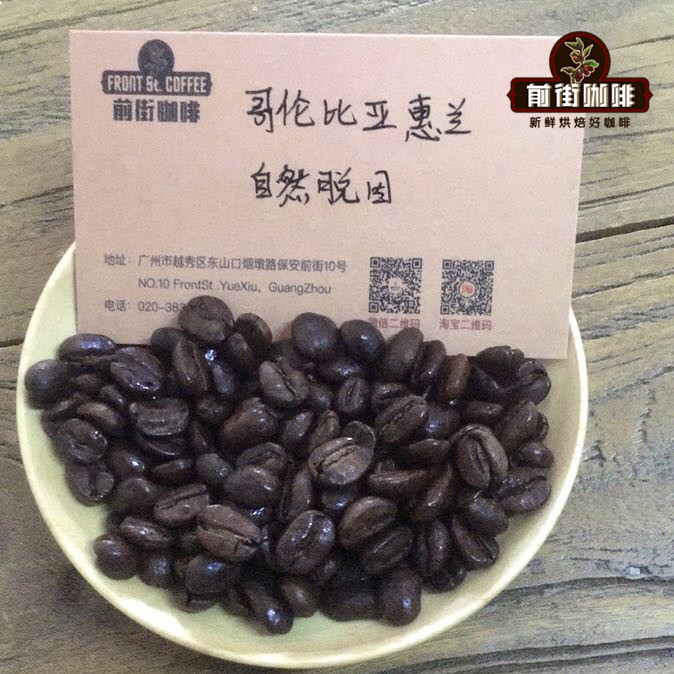
Country: Colombia
Producing area: Huilan
Altitude: 1750m
Variety: iron pickup
Treatment method: Swiss washing treatment
Flavor: berries, citrus, cocoa, nuts
I believe some coffee fans will ask what is Qianjie decaf coffee? As the name implies, decaf is coffee with only a small amount of caffeine, because coffee contains many ingredients and substances, among which caffeine has an obvious effect on the human body. For many people who are addicted to coffee but whose physical condition does not allow caffeine, decaf is the best choice.
In general, Arabica coffee beans contain 1.1%-1.7% caffeine, while robusta beans contain 2%-4.5% d caffeine. Decaf coffee is required to contain no more than 0.3% caffeine in brewed coffee. That means no more than 5 milligrams of caffeine in a cup of decaf.
The treatment of decaf coffee must use coffee raw beans. According to the data of Qianjie, it is known that there are three main treatment methods to remove caffeine, namely, traditional / European treatment, Swiss water treatment and carbon dioxide supercritical treatment. All three methods are very effective in removing most caffeine, leaving only 23% of the total amount of original caffeine in coffee beans.
The decaf in Qianjie uses the Swiss washing method. Because the washing method can better maintain the original flavor of raw coffee beans, which is what Qianjie wants to bring to everyone.
What is the treatment process of the Swiss washing method? Looking through the materials in front of the street, we learned that this treatment should first soak the coffee beans in warm water, after caffeine and other ingredients are dissolved in the water, filter the caffeine in the essence with activated carbon, and then introduce the non-caffeinated essence into the previous coffee beans. let the coffee beans reabsorb the lost ingredients. To get decaf beans.
Front Street Coffee Columbia Cherry Blossom (Coca) Coffee beans
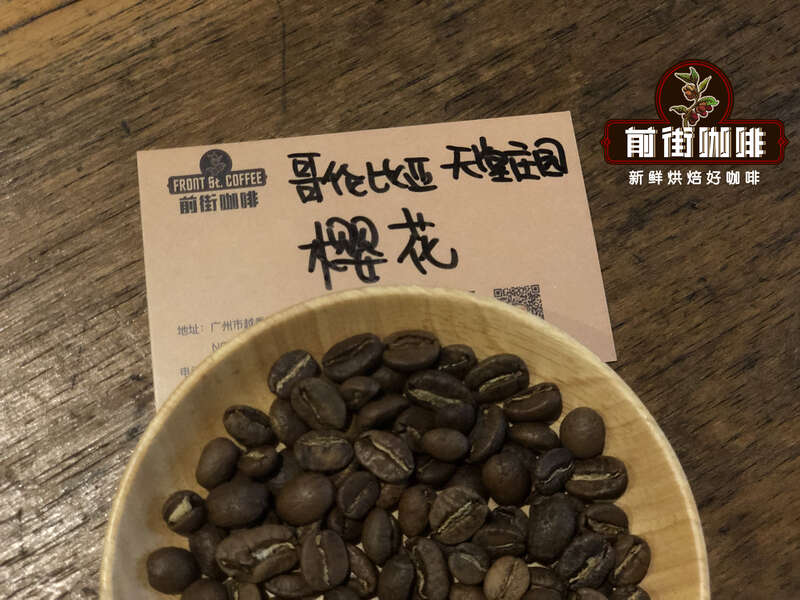
Country: Colombia
Production area: Cauca (Paradise Manor)
Altitude: 2050m
Variety: Castiyou
Treatment method: double anaerobic washing treatment
Flavor: spices, tea, citrus
The "cherry blossom" coffee comes from the Paradise Manor in Cauca, Colombia. The name of the cherry blossom is probably named "cherry blossom" because it smells like cherry blossoms.
According to Qianjie, Paradise Manor was only known by coffee fans in 2015 and is a rising star. It was started by Mr. Diego Samuel in 2008 as a small family-owned manor, while the owner put the annual surplus into the research of coffee agriculture and continued to delve into how the boutique flavor can be better produced.
Until 2015, he participated in the local regional competition for the first time and won the first place. After becoming famous in World War I, he was recognized by the industry and gave him more motivation in promoting the cultivation of boutique coffee. That's why Paradise Manor is widely known to coffee fans.
Front Street Coffee Columbia Huilan Coffee beans (rations beans)
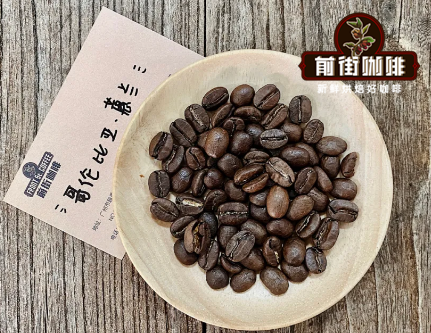
Country: Colombia
Producing area: Huilan
Altitude: 1500-1800m
Variety: Kaddura
Treatment: washing treatment
Flavor: nuts, dark chocolate, caramel, soft fruit acid
It is mentioned in the front street above that Colombia Huilan is the most famous coffee production area in the country, so the coffee cherries here also have the original flavor of the country's coffee, that is, sweet flavor and clean feeling. So Qianjie coffee beans are treated by washing treatment, because the water washing treatment method can best reflect the original taste of coffee cherries.
What is the process of washing treatment? Let's come to the front street to popularize science.
First of all, coffee farmers will first pour the picked coffee berries into a large tank, the immature inferior beans will surface, and the ripe and full fruits will sink to the bottom of the water, and the defective beans (fruits) floating on the surface will be removed. Then use the pulp sieving machine to remove the outer skin and pulp of the coffee fruit, when the coffee beans are still attached to a layer of slippery pectin. So put the coffee beans with pectin in the fermentation tank for 16 to 36 hours, during which the microbes will decompose the pectin. Then, when the fermentation is complete, use a lot of water to remove the pectin residue from the coffee beans. Finally, the washed coffee beans are dried in the sun. This kind of washing treatment will make the coffee bean acidity soft and strong, mellow and light, sweet and spicy.
The above is the relevant information about the Colombian coffee beans and some Colombian coffee that Qianjie gave you. I believe coffee fans who like Colombian coffee flavor also have a better understanding of Colombian coffee.
For more boutique coffee beans, please add private Qianjie coffee on Wechat. WeChat account: kaixinguoguo0925
Important Notice :
前街咖啡 FrontStreet Coffee has moved to new addredd:
FrontStreet Coffee Address: 315,Donghua East Road,GuangZhou
Tel:020 38364473
- Prev
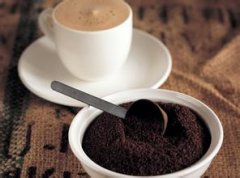
A brief introduction to the treatment method of grinding degree and baking degree of Ludawang boutique coffee
Rwanda Coffee Market: Rwanda Coffee is absolutely high quality in the form of washed Arabica beans. As far as Africa is concerned, its coffee industry is remarkable because the country thrives mainly by producing the best possible coffee beans. Coffee from Rwanda is becoming more and more popular in the international market. The mission of the Rwandan Coffee Association is to manage and supervise the coffee production in Rwanda.
- Next

A brief introduction to the Market Price of Colombian Coffee from Global Coffee producing area
The thorny question facing Colombian coffee growers is whether to replace bourbon coffee trees with fast-growing and high-yielding Arabica coffee trees. Some people say that the quality will not be as good as it used to be, but others say that in the place where coffee is most suitable for growth, there will not be much difference in quality. Characteristics of Colombian coffee: coffee grades are Supremo, Excelso and extreme
Related
- Detailed explanation of Jadeite planting Land in Panamanian Jadeite Manor introduction to the grading system of Jadeite competitive bidding, Red bid, Green bid and Rose Summer
- Story of Coffee planting in Brenka region of Costa Rica Stonehenge Manor anaerobic heavy honey treatment of flavor mouth
- What's on the barrel of Blue Mountain Coffee beans?
- Can American coffee also pull flowers? How to use hot American style to pull out a good-looking pattern?
- Can you make a cold extract with coffee beans? What is the right proportion for cold-extracted coffee formula?
- Indonesian PWN Gold Mandrine Coffee Origin Features Flavor How to Chong? Mandolin coffee is American.
- A brief introduction to the flavor characteristics of Brazilian yellow bourbon coffee beans
- What is the effect of different water quality on the flavor of cold-extracted coffee? What kind of water is best for brewing coffee?
- Why do you think of Rose Summer whenever you mention Panamanian coffee?
- Introduction to the characteristics of authentic blue mountain coffee bean producing areas? What is the CIB Coffee Authority in Jamaica?

